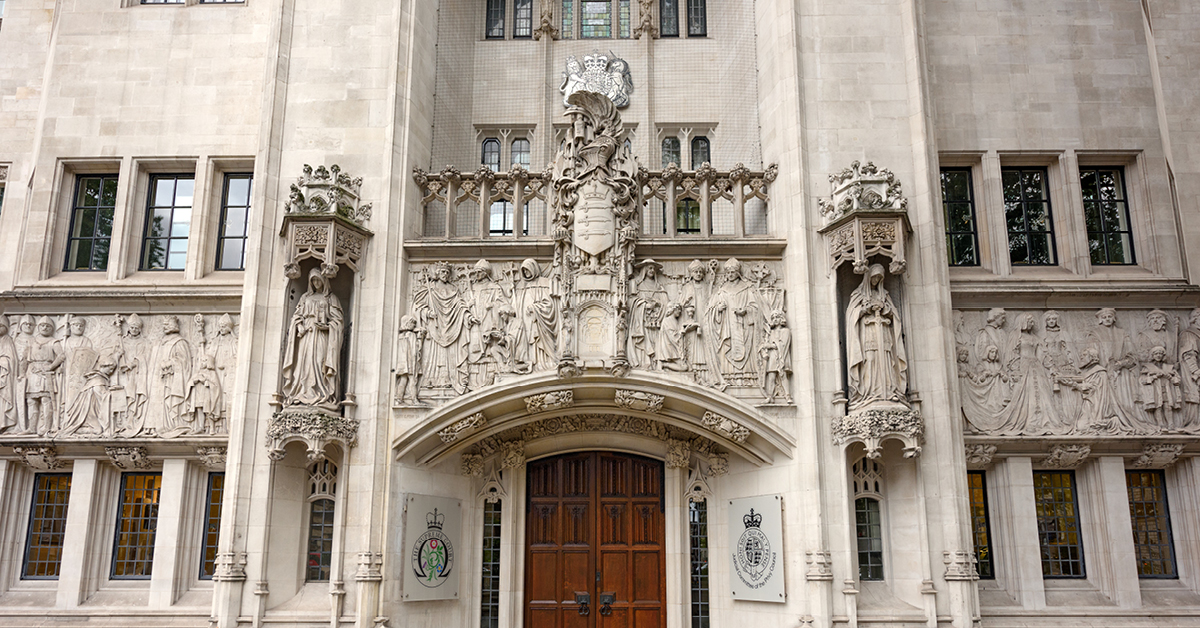As any securities litigator knows, a critical part of bringing a securities claim in England is identifying the correct claimants.
This issue was recently considered in Various Claimants v Barclays [2023] EWHC 2015 (“Barclays”), in which the judge adopted a sensible and pragmatic approach to a difficult and complicated issue. In this article, senior associate Tom Otter and trainee solicitor Rachel Luk consider the case in detail.
Identifying the correct claimants in a securities claim is never a straightforward process in circumstances where custody data is often held across a number of different systems. In addition, the passage of time, intervening acquisitions and restructuring exercises generally mean a detailed investigation is necessary to establish the correct claimant entities.
Such investigations can sometimes produce counter-intuitive results, for example, a different description of a claimant in English proceedings to that used in securities actions in other jurisdictions such as the United States. Further, the corporate nature of some claimants means that reference is needed to the laws of their domestic jurisdiction to establish whether or not they are legal individuals and can be claimants in their own name.
In recent years, defendants have focused considerable time and effort on challenging the identity of claimants in securities claims, with the high point from a defendant’s perspective being the judgment in Various Claimants v G4S plc [2021] EHWC 524 (“G4S”, which we wrote about here).
Disputed claimants
Barclays considered applications to amend the names of and substitute claimants.
The applications were made under Civil Procedure Rule (CPR) 17.4: for amendments at the court’s discretion after the limitation period has expired, and CPR 19.6: for substitutions at the court’s discretion after the limitation period has expired. The judgment provides a useful summary of the case law, but this is not addressed in this article.
Agreement was reached between the claimants’ and defendant’s solicitors in correspondence before the hearing in relation to amendments/substitutions of several claimants, but there remained 43 disputed claimants (the “Disputed Claimants”), which were the subject of the applications. The Disputed Claimants were divided into the following nine categories:
A. Name changes
Category A Disputed Claimants had changed their names (while remaining the same legal personality) or had changed their names as a result of mergers with other funds.
B. Typographical or clerical mistakes
Category B Disputed Claimants applied to change their names due to inadvertent typographical errors in the Claim Form.
C. Massachusetts business trusts
Category C Disputed Claimants were Massachusetts business trusts (MBTs). The evidence of the claimants’ solicitor was that during the initial verification phase, the client had confirmed the MBT has a separate legal personality. However, later, it became apparent that the title to the assets of these trusts vested in their trustees and the MBTs did not have capacity to sue in their own names.
D. Delaware Statutory Trusts
Category D Disputed Claimants were sub-funds of trusts established under the Delaware Statutory Trust Act. The act provides that a Delaware statutory trust is a legal entity and may sue or be sued in its own name. The Delaware statutory trusts were, therefore, the correct claimants. Of these funds, some had been further renamed, or its assets had been vested in a different Delaware statutory trust.
E. Other trusts
Category E Disputed Claimants were trusts that had been discovered to have no legal personality, which meant they could not sue in the name of the trust but only in the name of the trustees. The correct claimants were, therefore, the trustees of the trusts rather than the trust.
F. Retirement systems/pension trusts
Category F Disputed Claimants were entities set up under statute which did not have the requisite legal personality to be a claimant.
G. Other Naming Issues
Category G consisted of three claimants incorrectly named for different reasons, including incorrect client instructions or which had been found to be incorrect following a deeper investigation into the fund’s constitution or the capacity in which it held the relevant funds.
H. Trusts incorrectly named
Category H Disputed Claimants were entities which were sub-funds of an Irish unit trust.
I. Wrong capacity
Category I consisted of claimants affected by a merger or transfer so that the resulting entity had its own or a different legal personality.
Argument by Barclays’ counsel
Barclays’ counsel contended that for the Disputed Claimants, the court should exercise its discretion not to allow the amendment/substitution on the basis that:
- there were a significant number of errors given that 189 of the original 310 claimants had abandoned their claims, and errors had been made in 57 of the continuing claims,
- there was no good reason for the errors: the claimants’ lawyers had pointed to a lack of time (rarely accepted as an excuse), mistakes made by their clients and a change in the law,
- there had been a delay in bringing the applications,
- there has been a failure of the claimants’ original lawyers to investigate the claims properly, and
- there would be prejudice to the bank, which had incurred significant costs. Were the amendments/substitutions allowed, the bank would lose its limitation defence in respect of the Disputed Claimants.
The claimants’ counsel focused on the prejudice the Disputed Claimants would suffer if the applications were not accepted, ie, they would lose their claims. The claimants’ counsel also argued that G4S (in which the judge took a restrictive approach when considering whether to permit amendments/substitutions) was arguably punitive and not reflective of the approach taken more generally in the case law.
Judgment
The judge found largely for the claimants, except in two cases, and was critical of the conduct of the claimants’ previous solicitors. He strongly suggested he would look to balance the prejudice the bank had suffered by awarding the bank its legal costs of the applications (albeit this remains to be determined at a later hearing in November).
In exercising his discretion, the judge applied the following relevant factors set out in the judgment in Insight Group Ltd v Kingston Smith (A Firm) [2012] EWHC 3644 (QB):
- The judge considered the bank had had sufficient notification of the claims. It had been sent the Letter of Claim before the limitation period expired and was prepared to suspend it pursuant to a Standstill Agreement. The judge took this to mean the bank was not significantly concerned about identifying every claimant before the expiry of the limitation period.
- The fact that there had been limited time available for the claimants to complete the identifying process was, in the judge’s opinion, not reasonable justification for the number of errors made and failure to meet Mr Justice Hildyard’s requirement in Manning and Napier Fund Inc v Tesco plc, namely: “Joinder of claimants to group actions… should not be a matter of subscription but of orderly and careful assessment…” However, the judge did not accept that the errors made were enough to cause reasonable doubt as to the identity of all of the Disputed Claimants (apart from two).
- The judge held that the balance fell strongly in the claimants’ favour as they would be subject to significant prejudice if they were refused permission to amend, being deprived of the opportunity to bring their claims within the limitation period. The judge accepted there had been some prejudice to the bank in costs, stress and management time in connection with the delay but that this did not sufficiently tip the balance. He noted that his conclusion differed from Mr Justice Mann’s in G4S, giving much greater weight than Mr Justice Mann to potential prejudice to the claimants due to the nature of the amendments and the fact that the bank could be compensated for the delay by costs.
- In the judge’s opinion, the delay of 12 to 18 months (from when the claimants should have known they needed to issue the application to when the application was listed) was not reasonably justified. It was a strong factor against the exercise of discretion, though not fatal, as he did not want to refuse permission for the delay alone. It was relevant that the delay in this case could be distinguished from other cases as it was in the context of group securities litigation where the claimant universe is especially large. There were also no other issues with the claimants’ conduct.
The judge also accepted that the consequence of the delay must be the result of a comparison between the position now and what it would have been if the correct claimants had been named in the Claim Form. The comparison led the judge to conclude that there would be no prejudice to the bank from here onwards, and a costs order could mostly compensate for the prejudice.
Upon balancing the Insight factors, the judge exercised his discretion to grant permission to amend. He considered that the notification to the bank before the expiry of the limitation period and the potential prejudice that would impact the claimants outweighed the reason for errors and the consequences of the delay.
Conclusions
Although these types of applications are at the court’s discretion, Barclays is arguably a departure from the approach taken in G4S. This approach recognises the realities of real life and should be welcomed by claimants. However, it is by no means certain that applications to amend names in other claims will be viewed in the claimants’ favour and will be heavily dependent on the various factors at play. Applications of this type cause significant delays to proceedings and unnecessary additional costs. In this case, instead of a case management conference having taken place around 18 months from issue (in November 2020), it had yet to occur as of the date of the judgment.
The outcome is a salutary lesson for those less experienced in conducting securities actions to undertake a full investigation through the entire custody chain to establish the correct claimants. Claimants’ lawyers should not rely too much on secondary data sources (such as internal books and ledgers) but rather find the primary documents (such as trust deeds and the like) to understand exactly how the securities in question are held.
You can find further information regarding our expertise, experience and team on our Securities Litigation page.
If you require assistance from our team, please contact us.
Subscribe – In order to receive our news straight to your inbox, subscribe here. Our newsletters are sent no more than once a month.







